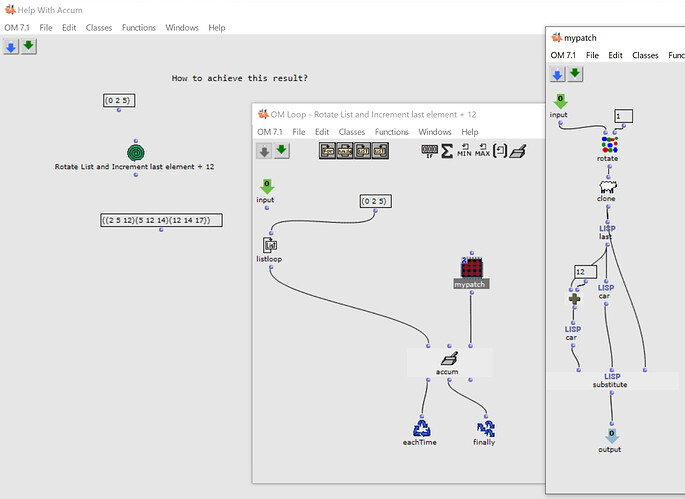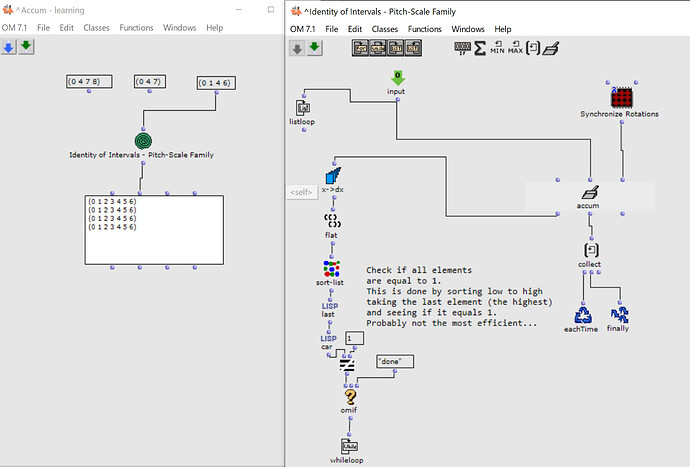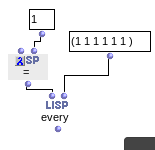Hello,
I am once again faced with using the (dreaded) accum object. I know that I shouldn’t dread using it, but I just cannot come to grips with it.
What I would like to do;
Input a list - rotate the list by one and increase the value of the last element by 12 - perform this process for all rotations (list length - 1)
For example;
(0 2 5)
Rotation 1 - (2 5 12)
Rotation 2 - (5 12 14)
Rotation 3 - (12 14 17) - This is redundant for my purposes as now the entire list is just +12.
I have created a loop with the working function in a sub-patch set to lambda mode. However, when paired with the accum object I just succeed in getting longer and longer error messages. Any suggestions?
Help With Accum.omp (335 Bytes)




